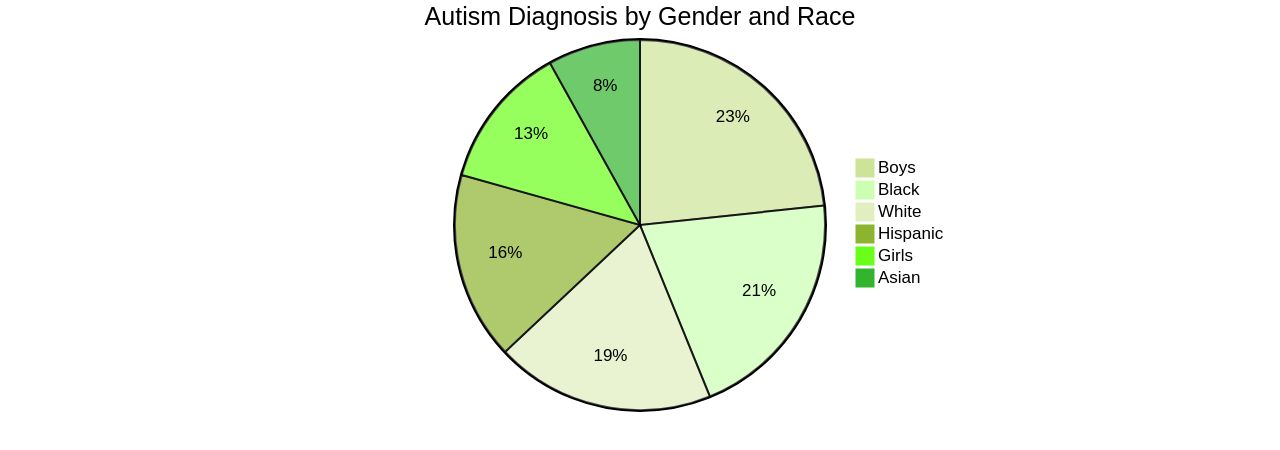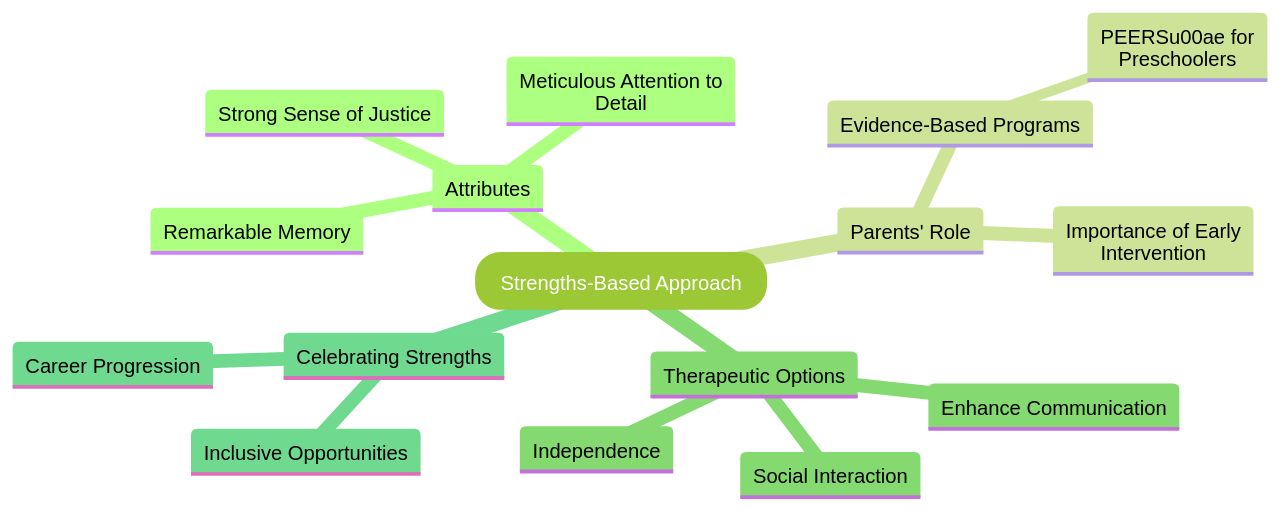Introduction
Autism Spectrum Disorder (ASD) is a complex neurodevelopmental disorder that affects learning, communication, and social interaction. The severity and range of symptoms can vary greatly, making diagnosis and support challenging. Genetic factors play a significant role in the development of autism, but there is no single cause identified.
Early intervention and diagnosis are crucial for improving outcomes, but there is often a delay in accessing appropriate services. Building a supportive environment and addressing communication challenges are essential for individuals with autism, and promoting social skills development is key to their success in adulthood. This article explores these topics and provides strategies and resources for parent advocates navigating the world of autism.
Understanding Autism: A Complex Neurodevelopmental Disorder
Autism Spectrum Disorder (ASD) is a lifelong neurological and developmental condition that manifests in a variety of ways, impacting learning, communication, and social interaction. While the signs of autism become evident in early childhood, often by age 3, the severity and range of symptoms can differ greatly from person to person. The diagnosis is based on specific criteria detailed in the DSM-5, which requires the presence of core autism features in the early years.
However, detection can be challenging as some individuals develop coping strategies that mask the symptoms, and symptoms may not emerge until social demands exceed their capabilities. The origins of autism are complex and multifaceted, with no single cause identified. Genetic factors play a significant role, with research indicating a hereditary pattern in many cases.
Although no single gene has been pinpointed as responsible, scientists are exploring genetic code irregularities that may be inherited by those with ASD. Brain scans have revealed differences in brain shape and structure when compared to neurotypical development, adding to the understanding that genetics and medical issues are involved. It's important to dismiss myths that vaccines, parenting styles, or nutrition cause autism.
Treatment for ASD focuses on supporting and managing symptoms to improve daily life and overall well-being. Since autism presents uniquely in each individual, personalized support and intervention plans are critical. Early diagnosis and intervention have been shown to be beneficial for long-term outcomes.
Professionals skilled in assessing communication, behavioral, and developmental levels play a vital role in diagnosing and providing appropriate support. In Australia, the prevalence of autism has increased, with a male-to-female ratio of approximately 3:1. This rise calls for enhanced awareness, services, and inclusive policies to support individuals with autism and their families.
The Importance of Early Intervention and Diagnosis
Recognizing the early signs of autism is a pivotal step in providing the necessary support to individuals on the spectrum. With the American Academy of Pediatrics advocating for autism screening at 18 and 24 months, there is a growing emphasis on detecting symptoms as soon as they emerge, sometimes as early as 12–14 months.
Despite the availability of evidence-based tools for early identification, the journey from initial screening to a formal diagnosis can extend beyond two years, highlighting a critical gap in the system. This delay underscores the need for improved strategies to expedite diagnosis, ensuring timely access to interventions that are most effective when initiated early in a child's life.
The DSM-5 stipulates that the hallmarks of autism should be noticeable in the early stages of childhood, although they may become more pronounced as social demands increase. A comprehensive evaluation by a multidisciplinary team is essential for an accurate diagnosis, considering the complexity of autism's presentation.
Intensive, family-involved, and generalization-focused treatment approaches are widely agreed upon, yet research on the comparative efficacy of various intervention programs is scant, particularly for the birth to 3 age group. The lack of empirical studies on these programs means that many remain underutilized or unknown, despite their potential to significantly enhance outcomes for young children with autism. Current research efforts are directed towards integrating routine autism screening into standard pediatric check-ups, a move supported by the National Institute of Mental Health. This initiative aims to bridge the gap between early detection and intervention, acknowledging that early intervention is not only about better outcomes but is crucial for enabling individuals with autism to navigate life with greater independence and well-being. With autism now recognized to affect 2% of the population, the urgency for accessible and effective early intervention programs has never been more apparent.
Building a Supportive Environment: Strategies for Parent Advocates
Understanding the unique needs of individuals with autism is vital, particularly as they navigate traditional learning environments. In North Macedonia, for instance, autistic children are integrated into regular classrooms, a practice that enhances social inclusion but also presents challenges due to sensory processing differences. Some children may be hypersensitive to sensory inputs like noise or touch, while others might be under-sensitive, requiring tailored support such as a class assistant.
The establishment of a sensory room in an elementary school, with the collaboration of parents and teachers, exemplifies a proactive approach to accommodate these sensory needs, promoting a more supportive educational setting. Meanwhile, healthcare initiatives, like the autism-friendly patient experience developed by Cork University Hospital, demonstrate the significance of adjusting healthcare practices to better serve the autistic community. The hospital's efforts, supported by the autism advocacy society As I Am, have led to more efficient and less stressful medical procedures for children with autism, highlighting the importance of understanding and addressing their unique sensory sensitivities.
Furthermore, adopting a strengths-based approach acknowledges the remarkable abilities often associated with autism, such as exceptional memory, keen visual thinking, and a meticulous attention to detail. This perspective fosters trust and emphasizes the potential for individuals with autism to thrive and contribute meaningfully to society. The early identification of autism, as young as 12–14 months, is crucial for connecting children to supportive services, significantly impacting their development and family support systems.
Statistics reveal the disparities in autism diagnosis, with boys being four times more likely to be diagnosed than girls and children of color often receiving later diagnoses. These findings underscore the need for increased awareness and improved access to diagnostic services to ensure all children receive the support they require. As we recognize the rise in autism prevalence, it is imperative to continue advocating for environments that cater to the diverse needs of the autism community, whether in educational settings, healthcare facilities, or within the broader society.

Addressing Communication Challenges: Tools and Techniques
For individuals on the autism spectrum, traditional methods of communication can be challenging, but there are innovative ways to support their ability to express themselves. Augmentative and alternative communication (AAC) systems, for instance, are vital for those who do not rely on vocal speech. These systems range from low-tech options like manual signs and picture cards to high-tech devices that generate electronic speech.
These tools are not just about expressing basic needs; they enable the development of relationships and participation in academic instruction. Recent research has uncovered that many non-speaking autistic individuals may have untapped literacy skills. A study from the University of Virginia found that a significant number of nonspeaking autistic teenagers and adults understand written language conventions, despite not having formal education in literacy.
This suggests that written communication could be a key to unlocking new opportunities for this population. In the classroom, the TEACCH approach offers a structured educational treatment that leverages visual learning and consistency, which aligns well with the strengths of many autistic individuals. By incorporating clear visual routines and defined learning spaces, teachers can foster an environment conducive to learning and communication.
Moreover, digital tools offer another avenue for connection. Video calls and social media networks can provide autistic individuals with a means to find community and establish social connections in a manner that may be more comfortable for them. This approach acknowledges the complex nature of communication and the importance of offering alternative methods to engage with the world, thus giving individuals greater control over their interactions.
Promoting Social Skills Development: Strategies and Activities
The journey into adulthood for individuals with autism is laden with both societal and psychological hurdles. Recognizing the strengths and unique abilities of autistic individuals is a cornerstone in nurturing their social development.
A strengths-based approach, advocated by social worker Bertha Reynolds and supported by recent research, emphasizes the importance of focusing on the positive attributes such as remarkable memory, meticulous attention to detail, and a strong sense of justice that autistic individuals often possess. These skills are not just beneficial; they are essential for autistic individuals to navigate the complexities of adult life and to realize their potential within the community.
Parents play a pivotal role in this developmental process, especially when it comes to social skills. Evidence-based programs like the PEERS® for Preschoolers have shown promising results.
Parents report not only an increase in their children's social capabilities and self-assuredness but also a personal sense of empowerment and understanding. This reciprocal growth is echoed in the work of Dr. Hannah Schertz, who stresses the significance of early intervention.
By utilizing a mediated learning approach, parents become the architects of their child's social communication, laying the groundwork for future verbal skills. Therapies tailored to enhance communication, social interaction, and independence are vital. The Autism Community in Action (TACA) reminds us of the variety of therapeutic options available. These interventions are not merely to address deficits but to cultivate and celebrate the inherent strengths of autistic individuals. As research and awareness continue to advance, the hope is that these efforts will translate into more inclusive opportunities for career progression, reflecting the true capabilities of the autistic community.

Conclusion
In conclusion, Autism Spectrum Disorder (ASD) is a complex neurodevelopmental disorder that affects learning, communication, and social interaction. Early intervention and diagnosis are crucial for improving outcomes, but there is often a delay in accessing appropriate services.
Genetic factors play a significant role in the development of autism, but there is no single cause identified. To navigate the challenges of autism, parent advocates can focus on building a supportive environment and addressing communication challenges.
Creating inclusive educational settings that accommodate sensory needs and adjusting healthcare practices to better serve the autistic community are essential steps. Adopting a strengths-based approach recognizes the remarkable abilities associated with autism and fosters trust in the potential for individuals with autism to thrive.
Addressing communication challenges involves utilizing augmentative and alternative communication (AAC) systems and recognizing the untapped literacy skills of non-speaking autistic individuals. The TEACCH approach in classrooms provides structured visual learning opportunities, while digital tools offer alternative methods of connection.
Promoting social skills development is key to success in adulthood for individuals with autism. A strengths-based approach emphasizes focusing on positive attributes and nurturing social capabilities. Evidence-based programs like PEERS® for Preschoolers have shown promising results, empowering parents and enhancing their children's social skills. Overall, by understanding the unique needs of individuals with autism and advocating for inclusive environments, parent advocates can support their children's well-being and growth. It is through early intervention, tailored therapies, and increased awareness that we can create a society that celebrates the true capabilities of the autistic community.




